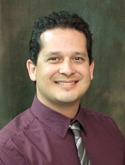Program Information
Moving From Computed Radiography to Digital Radiography: A Collaborative Approach to Improve Image Quality
D Sandoval1*, D Valenti2 , T Bateman2 , V Norris2 , G Mlady1 , R Selwyn1 , (1) University of New Mexico School of Medicine, Albuquerque, NM, (2) University of New Mexico Hospital, Albuquerque, New Mexico
Presentations
SU-F-P-6 (Sunday, July 31, 2016) 3:00 PM - 6:00 PM Room: Exhibit Hall
Purpose:To bring together radiologists, technologists, and physicists to utilize post-processing techniques in digital radiography (DR) in order to optimize image acquisition and improve image quality.
Methods:Sub-optimal images acquired on a new General Electric (GE) DR system were flagged for follow-up by radiologists and reviewed by technologists and medical physicists. Various exam types from adult musculoskeletal (n=35), adult chest (n=4), and pediatric (n=7) were chosen for review. 673 total images were reviewed. These images were processed using five customized algorithms provided by GE. An image score sheet was created allowing the radiologist to assign a numeric score to each of the processed images, this allowed for objective comparison to the original images. Each image was scored based on seven properties: 1) overall image look, 2) soft tissue contrast, 3) high contrast, 4) latitude, 5) tissue equalization, 6) edge enhancement, 7) visualization of structures. Additional space allowed for additional comments not captured in scoring categories. Radiologists scored the images from 1 – 10 with 1 being non-diagnostic quality and 10 being superior diagnostic quality. Scores for each custom algorithm for each image set were summed. The algorithm with the highest score for each image set was then set as the default processing.
Results:Images placed into the PACS “QC folder” for image processing reasons decreased. Feedback from radiologists was, overall, that image quality for these studies had improved. All default processing for these image types was changed to the new algorithm.
Conclusion:This work is an example of the collaboration between radiologists, technologists, and physicists at the University of New Mexico to add value to the radiology department. The significant amount of work required to prepare the processing algorithms, reprocessing and scoring of the images was eagerly taken on by all team members in order to produce better quality images and improve patient care.
Contact Email:

